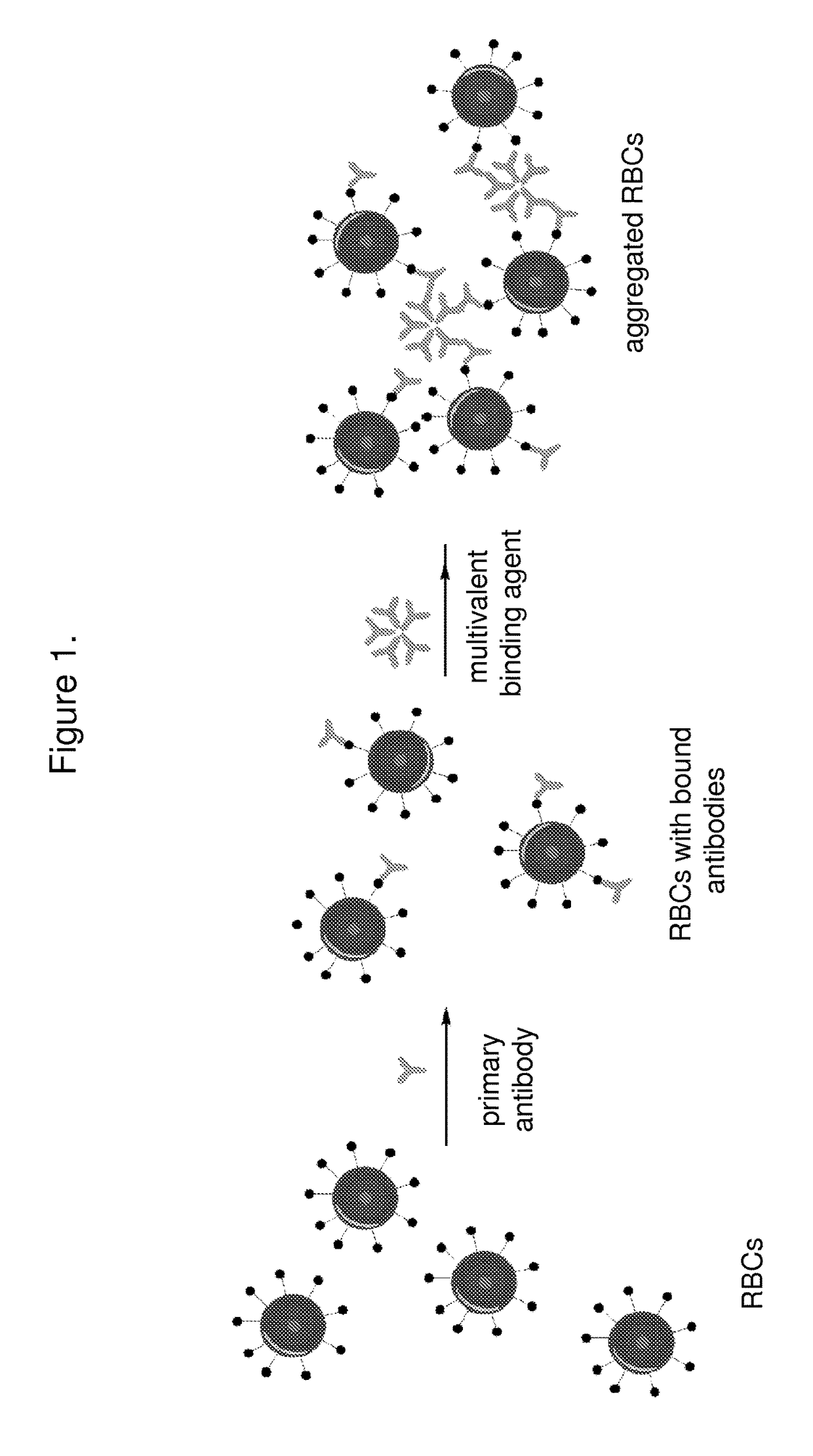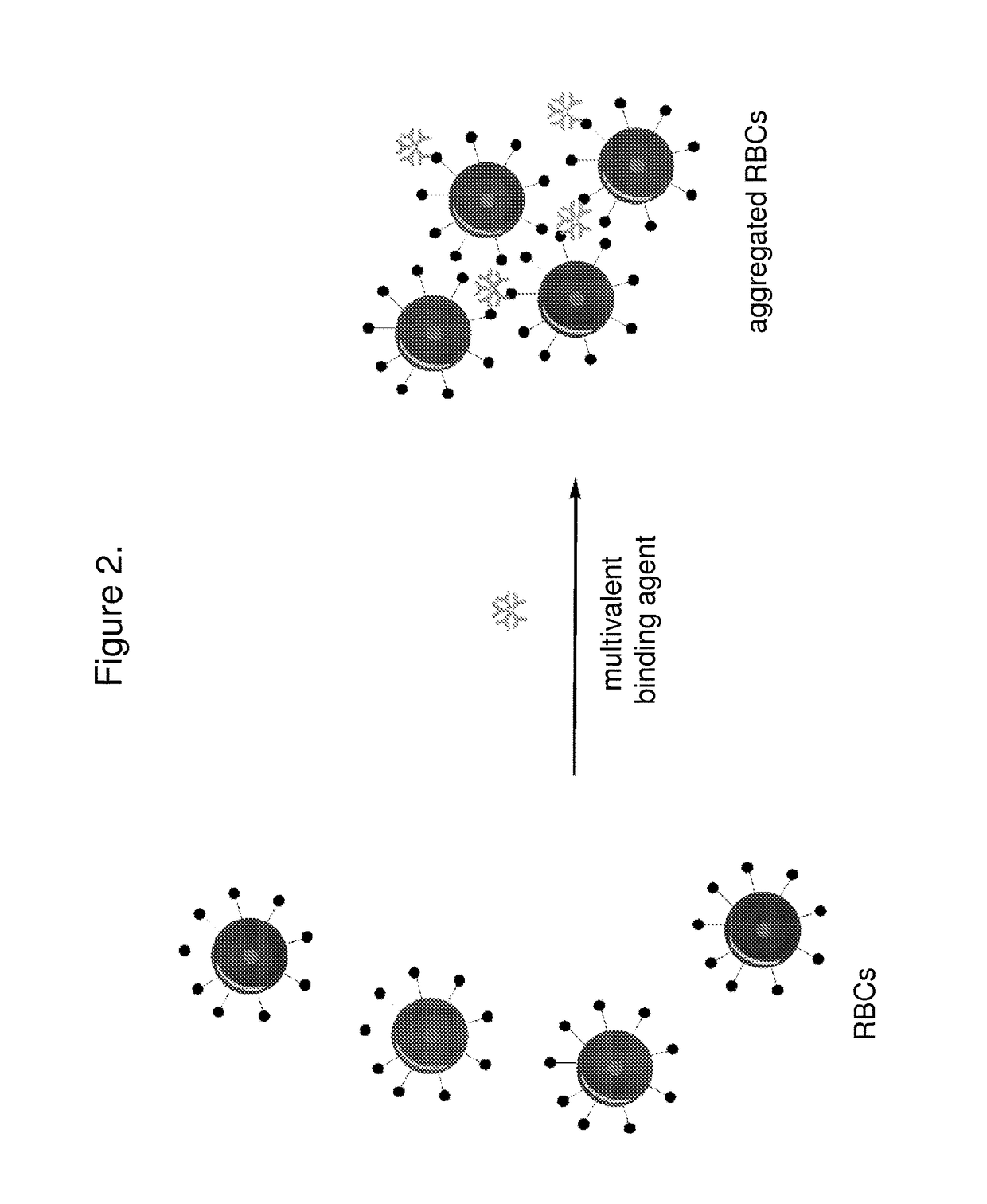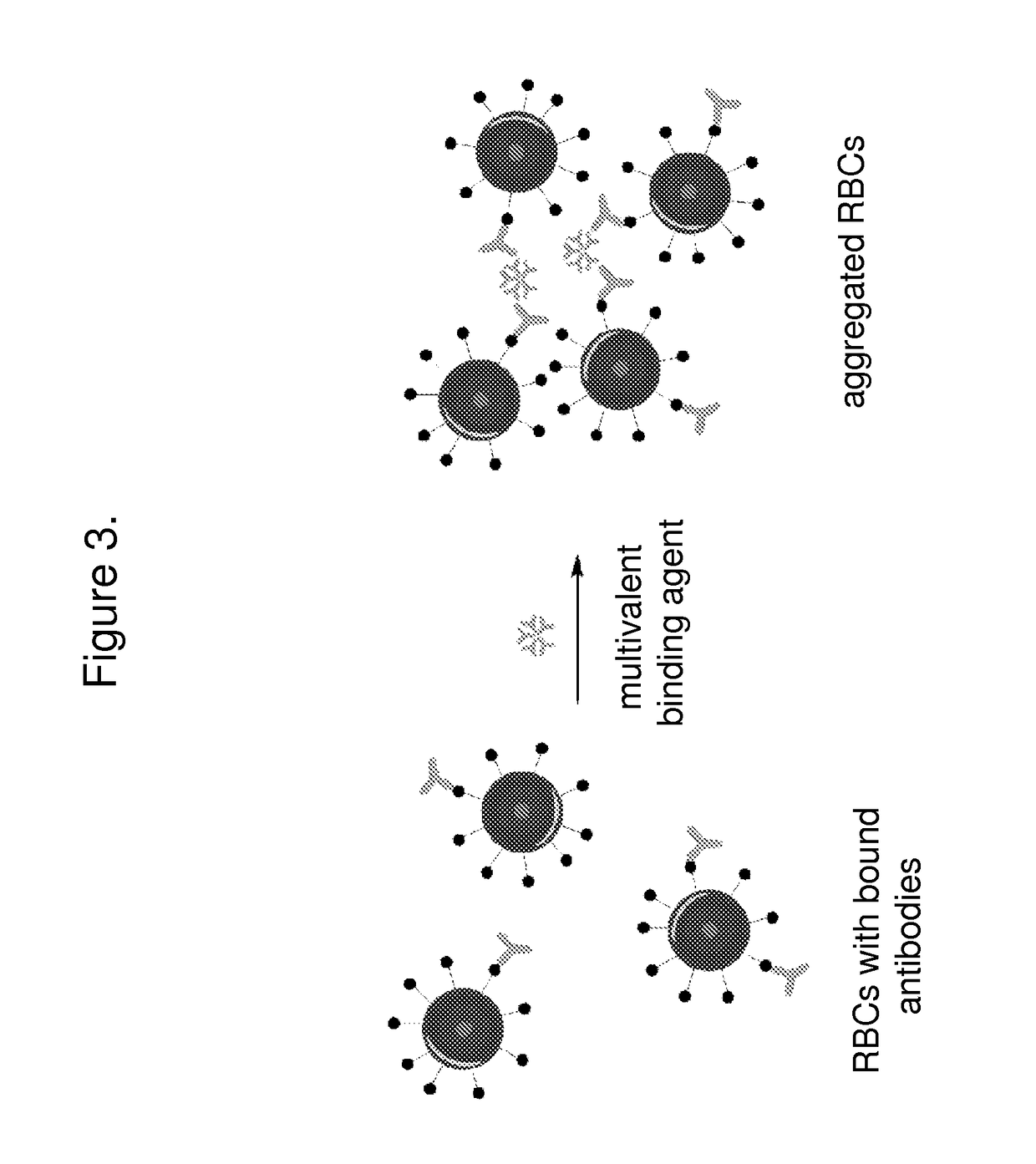Methods for blood typing and antibody screening
a technology of applied in the field of blood typing and antibody screening, can solve the problems of false positive tests for hemagglutination, increase in the sedimentation rate of erythrocytes, and rouleaux formation, so as to prevent erythrocyte sedimentation, increase viscosity, and prevent erythrocyte sedimentation
- Summary
- Abstract
- Description
- Claims
- Application Information
AI Technical Summary
Benefits of technology
Problems solved by technology
Method used
Image
Examples
example 1
Screening or Reverse Blood Typing
[0107]Briefly, the assay includes adding a small volume of reagent red blood cells (e.g. 10 μL) to a small volume (e.g. 10 μL) of patient serum or plasma. Potentiator can be added to accelerate the binding of antibodies to the surface of the reagent red blood cells. The sample can then be centrifuged and washed if desired. A multivalent binding agent such as monoclonal IgM can be added to promote aggregation. After mixing, the T2 reading can be taken to determine whether antibodies to the blood group on the reagent blood cells is present.
[0108]The principle of this assay is that T2MR is sensitive to RBC aggregation and can measure the rate of RBC aggregation. The extent of aggregation will depend on the binding of antibodies to the antigens on the surface of the RBCs and the subsequent complexation of the multivalent binding agent that cross-links antibodies on the surface of the RBCs. Aggregation is similar to clot formation, a process that can be w...
example 2
el Concept
[0110]This assay involves the comparison of two samples. One sample contains subject serum (e.g. 10 μL) and an equal volume of reagent RBCs and the other sample contains corresponding amounts of reagent RBCs combined with control serum lacking antibodies to the reagent RBCs. Comparison of the T2 signals of the target and control samples will occur over about 10 minutes. The change in T2 may either be the result of aggregation (presence of the settling peak, presence of a third peak, or change in the T2 of the settling peak relative to control).
example 3
ood Typing for ABOD Antigens
[0111]A small volume of washed patient red blood cells (e.g. 10 μL) are obtained and mixed separately with a small volume (e.g. 10 μL) of IgM against each of the ABOD antigens. After mixing, the T2 measurement is taken, possibly in a dynamic state with mixing. The T2 value can be compared to a standard curve or cut-off value to determine if the RBCs did indeed aggregate.
PUM
 Login to View More
Login to View More Abstract
Description
Claims
Application Information
 Login to View More
Login to View More - R&D
- Intellectual Property
- Life Sciences
- Materials
- Tech Scout
- Unparalleled Data Quality
- Higher Quality Content
- 60% Fewer Hallucinations
Browse by: Latest US Patents, China's latest patents, Technical Efficacy Thesaurus, Application Domain, Technology Topic, Popular Technical Reports.
© 2025 PatSnap. All rights reserved.Legal|Privacy policy|Modern Slavery Act Transparency Statement|Sitemap|About US| Contact US: help@patsnap.com



